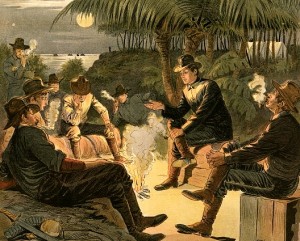5 Reasons Storytelling Makes Good Marketing & Business Sense
Storytelling is as ancient as the hand gestures and grunts of homo erectus man and woman of eons ago. Storytelling around campfires still exists but from a business perspective digital storytelling or content marketing is worthy of your time and investment. You can put your promotional message out in the universe via advertising, web sites or news releases, but if your story doesn’t scratch an itch or relieve a pain of your client or consumer, there’s no reason for anyone to pay attention to some ‘hollow’ promises. Here are five reasons why artful storytelling is meaningful for your business:
1) Build personalities into your brand and its story
The AFLAC duck, Allstate mayhem man and Progressive Insurance’s lady Flo have a few things in common; mainly they are successful brand mascots. Their funny or memorable ad messages are directed to niche audiences and they stand out in an industry that historically has had a high yawn factor when it comes to ads.
2) Use the story arc
These insurance brand mascots’ success stems from being a part of the brand’s continuing storyline (also known as a story arc). Information gathered from these companies and their consumer research gives a roadmap to creatives who then tailor the story and the characters’ traits, interests and quirks or interesting story hooks into the messaging.
3) Remember what makes a good story
In elementary school you should have learned the basics of a story. Here I’ve boiled it down to five main elements: the characters (protagonists, antagonists), the plot, the setting, the challenge and the resolution. In the example of the Geico lizard, the reptile is memorable, sarcastic or funny and is put in situations the consumer can identify with and for a moment makes the viewer forget it’s actually an ad or marketing message.
4) Map out channels for your stories
In simple terms, content marketing first identifies personas you target for business then directs the right message and story for these people to use or buy your product or service. Thus, you need to figure out which digital channels (for example)–from LinkedIn to Facebook to Twitter or trade show associations’ groups would want to hear your finely-crafted story.
5) Make sure you don’t tell the WHOLE story and tell it well
Sure your message needs to be compelling to your audiences but don’t give away the farm. Give them a teaser or contest or hook to make them come back to these channels (or directly to your business) for more information, consistently.


